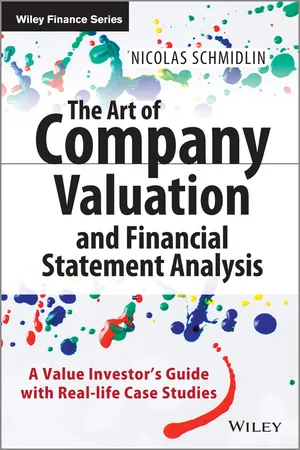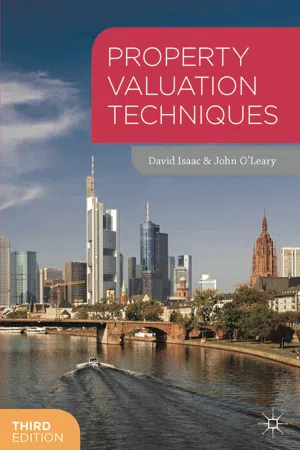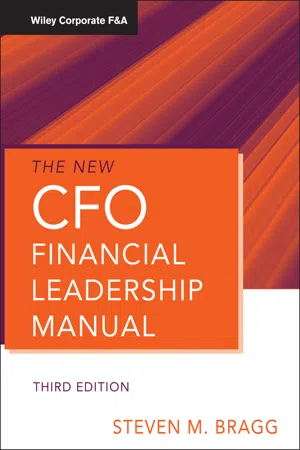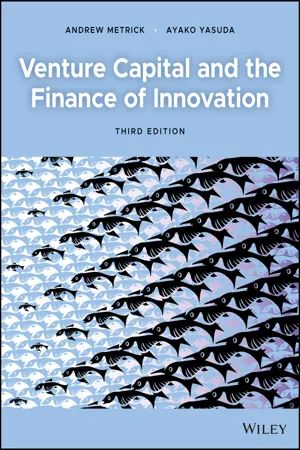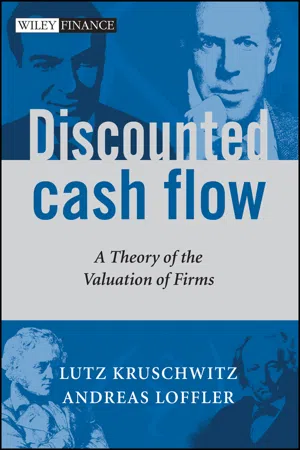Business
DCF Model
The DCF (Discounted Cash Flow) model is a financial valuation method used to estimate the value of an investment based on its expected future cash flows. It involves discounting these cash flows back to their present value using a discount rate, typically the cost of capital. The DCF model is widely used in finance to assess the attractiveness of an investment opportunity.
Written by Perlego with AI-assistance
Related key terms
1 of 5
11 Key excerpts on "DCF Model"
- eBook - ePub
- Bente Villadsen, Michael J. Vilbert, Dan Harris, Lawrence Kolbe(Authors)
- 2017(Publication Date)
- Academic Press(Publisher)
Chapter 5Discounted Cash Flow Models
Abstract
The capital asset pricing model and similar risk premium models focus on understanding the risk–return trade-off in capital markets. The discounted cash flow (DCF) model attempts instead to estimate the cost of capital by analyzing the security's expected future cash flows relative to its current price. The DCF Model assumes that the current price equals the sum of those expected future cash flows discounted at a constant discount rate, and it solves for the discount rate that equates that sum with the price. We address implementation issues, including difficulty in determining the security's expected future cash flows, as well as issues inherent in the fundamental theoretical assumptions underlying the DCF. In particular, we caution against an absolute reliance on the assumption that the price of a stock is given by the present value formula. Valuing options requires techniques other than the DCF formula, such as the well-known Black–Scholes model.Keywords
Asset pricing models; Business risk; Cash flow; Dividends; Efficient market hypothesis; Ibbotson three-stage DCF Model; Minimum variance frontier; Multistage DCF; Risk–return trade-off; Security analysts'optimism bias; Security market line; Share buyback; Sustainable growth; The discounted cash flow (DCF) modelIntroduction
Like the capital asset pricing model (CAPM), the discounted cash flow (DCF) model takes its point of departure from the security market line depicted in Fig. 4.2 of Chapter 4 . However, it works directly with the individual asset's cash flows and price. As a tool for estimating cost of capital, it derives the opportunity cost of capital determined by the market, without having to model explicitly the market risk–return trade-off that generated the market's opportunity set.The simplest DCF Model assumes investors expect dividends to grow at a constant rate forever. More elaborate versions permit nonconstant growth in the near term, eventually followed by constant growth at some future time. Implementation issues exist for all versions of the model. - eBook - ePub
Early Stage Valuation
A Fair Value Perspective
- Antonella Puca(Author)
- 2020(Publication Date)
- Wiley(Publisher)
CHAPTER 6 Discounted Cash Flow MethodJohn Jackmanand Antonella PucaThe discounted cash flow (DCF) method is an income-based approach in which enterprise value is estimated based on the present value of the company's expected cash flows, discounted at a rate that reflects the risk of these cash flows. The credibility of the DCF method lies in a reliable cash flow forecast and well-developed discount rates. The estimate of a discount rate that considers both the prospective of the firm in acquiring its capital resources (cost of capital) and of market participants in pursuing their risk/return objectives (rate of return) is an important step in ensuring that a DCF Model for an early stage enterprise (ESE) is reasonable and consistent with fair value principles.This chapter develops a DCF Model to estimate enterprise value under the fair value standards of ASC 820/IFRS 13, using a venture-backed ESE as an example. After presenting the model's components and key assumptions in some detail, the chapter shows how a DCF Model can be built to reflect the special characteristics of an ESE using a scenario analysis to account for the company's risk of failure. We then discuss how a DCF Model can be calibrated to estimate the fair value of the enterprise in subsequent measurement.1 As we walk through our model, we highlight some key considerations concerning the valuation process and the documentation requirements under the Mandatory Performance Framework (MPF).2In his studies of early stage valuation, Aswath Damodaran has underlined the importance of developing a realistic and internally consistent narrative on the company's path to profitability and to a stage of sustainable long-term growth. The company's narrative should translate into valuation inputs and numbers in a model that can be adjusted at subsequent measurement dates as the company and market environment continue to evolve.3In our example, Racoon Inc. (Racoon) is a revenue-generating company that has already completed its Series B round of financing. The company expects significant revenue growth but is still recording net losses due to a sustained level of research and development expenses and significant marketing costs for the commercialization and distribution of its products. A valuation analyst in a venture capital fund is putting together a model to value the company for financial reporting purposes under ASC 820. More than a year has passed since the company's Series B round and the valuation analyst elects to use a DCF Model in valuation. The analyst estimates the model's cash flows under two scenarios:4 - No longer available |Learn more
The Art of Company Valuation and Financial Statement Analysis
A Value Investor's Guide with Real-life Case Studies
- Nicolas Schmidlin(Author)
- 2014(Publication Date)
- Wiley(Publisher)
This very simple and abstract example already contains all components needed to determine the intrinsic value of a business: (1) the expected cash flows and (2) the discount rate. Transferred to a real company, however, forecasting (1) and determining (2) is much more difficult. Applying the tools and methods of company valuation and classification introduced in the previous chapters is a necessary precondition for carrying out an assessment altogether. Apart from the theoretically correct assessment of using discounted cash flows as outlined above, this chapter contains further valuation methods. These supplementary and alternative approaches are necessary because, on the one hand, the discounted cash flow method responds to minor changes of the parameters such as the discount or growth rate with significant fluctuations in the result and, on the other hand, the correct prognosis of future cash flows is difficult and error-prone in practice. The intrinsic company value is never an absolute and infallible value, but rather an approximation. The following assessment approaches are used to delimit this value:- discounted cash flow approachd
- equity approach
- entity approach
- APV approach
- market value approach
- fair price-to-earnings ratio
- fair price-to-book ratio
- fair price-to-sales ratio
- fair enterprise value/EBIT ratio
- net asset value approach.
8.1 DISCOUNTED CASH FLOW MODEL
The discounted cash flow approach (DCF) determines the fair company value by discounting future cash flows. According to this theory, the equity and enterprise value of a company are largely determined by its future cash flows and the appropriate discount rate. As parts of this model are commonly based on the theories of Modigliani and Miller, which in turn are problematic in practice, a different route will be chosen to determine the discount factor. Depending on the method, the result is either the value of the whole company, i.e. the fair value of debt and equity, or the fair value of shareholders’ equity directly, which is particularly relevant for investments in stocks.Within the framework of the discounted cash flow valuation, the cash flows of the business which is being valued are normally planned in detail for a time span of 5–10 years and are usually presumed to grow at a constant rate thereafter, which is referred to as terminal value. The value to be determined is therefore composed of the present value of the planning period and the terminal value. If non-operating assets such as unused property or high (net) cash holdings exist, they are often counted towards the final value, without impacting the cash flows. The established discounted cash flow models are divided into the following methods: - eBook - PDF
- David Isaac, John O'Leary(Authors)
- 2013(Publication Date)
- Bloomsbury Visual Arts(Publisher)
3 D i s c o u n t e d C a s h F l o w 3.1 Introduction 3.2 The cash flow concept 3.3 Discounted cash flow 3.4 Interpreting the Net Present Value (NPV) 3.5 The Internal Rate of Return (IRR) 3.6 IRR and investment analysis 3.7 DCF and property applications 3.8 Incremental analysis 3.9 Summary References Self-assessment questions Aims This chapter introduces cash flows and in particular discounted cash flows (DCFs). Using worked examples, the chapter will illustrate how this technique is used generally in a business context before identifying applications to property. The discussion will explain the vocabulary which accompanies DCFs and includes the Net Present Value and the Internal Rate of Return. Key terms >> Discounted cash flow (DCF) – a technique which discounts future cash flows to the present date. >> Net present value (NPV) – the net value, which may positive or negative, arising from a DCF appraisal of a project. >> Internal rate of return (IRR) – the discount rate at which the NPV equals zero. 3.1 Introduction Cash flows are an established part of business practice and of course the concept also applies at the micro level to an individual’s or a household’s budget. It is an unfortunate fact that most small businesses fail because they cannot generate sufficient cash flow to survive. Essentially the creditors and financial backers of such firms reach a point where they are no longer persuaded that the future promise of income will overcome current debts. Cash flows are not, however, just instruments for deciding when a business is no longer viable. They can play a 27 more constructive role in identifying company and project viability – how much the company might reasonably be paid for an investment property – and they may provide the evidence which justifies prudent borrowing to enable firms to expand and projects to progress. Cash flows are therefore versatile tools which can be used to support decision-making in a wide variety of contexts. - eBook - ePub
- Steven M. Bragg(Author)
- 2010(Publication Date)
- Wiley(Publisher)
Exhibit 22.11 .Exhibit 22.11 Discounted Cash Flow ModelThe buyer should beware of models where the terminal value is by far the largest component of the model; the terminal value is the least predictable part of the valuation, because it is the furthest into the future and assumes a specific sale price that is very difficult to justify. If the terminal value is the bulk of the DCF, then the buyer will need to supplement the DCF analysis with other forms of valuation analysis.A major part of the DCF analysis is the interest rate that is used for discounting the value of future cash flows to the current period. This interest rate is equivalent to the buyer's incremental cost of capital. The cost of capital is the weighted average cost of the buyer's debt, preferred stock, and equity. The cost of equity is the most difficult to determine, but usually involves the capital asset pricing model. On an extremely simplified basis, the cost of equity is at least 5 to 7 percent higher than the current interest rate on U.S. government treasury notes, and can be substantially higher. As an example, Exhibit 22.12 shows the dollar amount of the three components of a company's cost of capital, yielding a weighted average cost of capital of 10.7 percent.Exhibit 22.12 Weighted Average Cost of Capital CalculationIt is preferable to use the incremental cost of capital, which incorporates the buyer's most recent cost of debt. The incremental rate is better, because that is the rate at which the buyer will need to obtain funding to pay for the target.It is also possible to adjust the cost of capital for the perceived risk of the target company. For example, if the target is a well-established one with predictable cash flows, the buyer can simply use its cost of capital as the discount rate. However, if the target's cash flows are more uncertain, the buyer can add a risk percentage to its discount rate. By doing so, cash flows that are further in the future will be worth less in the DCF, resulting in a lower valuation for the target. - Andrew Metrick, Ayako Yasuda(Authors)
- 2021(Publication Date)
- Wiley(Publisher)
These codes can be viewed at http://www.osha.gov/pls/imis/sic_manual.html. 168 DCF ANALYSIS OF GROWTH COMPANIES years in the future. Furthermore, the rapid-growth phase is often characterized by operating mar- gins lower than industry averages, as companies scale up their production and price aggressively to gain market share. In the stable-growth phase, both R and operating margins should settle down to industry averages. 11.2 DCF Analysis: Mechanics DCF analysis is the gold standard of valuation. If done properly with accurate inputs—a big “if”— a DCF Model will produce the “correct” valuation of a firm. For this reason, most investment bankers, financial analysts, and academics make DCF analysis a centerpiece of their valuation work. Although there are many different types of DCF Models, the simple capital structure of most VC portfolio companies renders moot many of these differences, so we will be able to concentrate on the key concepts common to all types. All DCF Models have two key inputs: Discount rates (the “D” part) and cash flows (the “CF” part). Discount rates for venture capital were discussed at length in Chapter 4. In this chapter, we need discount rates for public companies, so the cost of venture capital is not directly applicable. There are several options for estimating discount rates for public companies. The simplest option—used in this chapter—is to just use the average cost of capital for the company’s industry. The Industry Statistics worksheet of the DCF.xls spreadsheet provides this data for 94 different industries. 2 A more complex alternative is to use a smaller group of comparable companies. This alternative will be discussed in Chapter 12. We focus most of this section on the computation of cash flow. The concept of cash flow is designed to pierce the accounting veil used for financial reporting and taxes so that we are left with the cash that is actually generated by the business.- eBook - PDF
Economic Feasibility of Projects
Managerial and Engineering Practice
- S.L. Tang(Author)
- 2003(Publication Date)
- The Chinese University of Hong Kong(Publisher)
The readers are expected to have a right concept about this. This point will be further discussed in Section 4 of Chapter 5. 3.4 Underlying Principles of DCF Method The DCF method is, similar to other methods previously discussed, based on the discount of future cash flows by taking account of the time value of money. The DCF method, like the equivalent annual cost method, also automatically allows the initial investment to depreciate over the life of the project (see Section 1 of Chapter 2). Since IRR is calculated by equation (3.4), the calculation is in fact based on the outstanding balance (or the undepreciated part) of the capital invested, having allowed for net incomes to offset against the investment. This point might be a little difficult for the ÷ ø ö ç è æ + 275 902 902 3. Discount Cash Flow Method 41 reader to appreciate, but it could be made easier if they look back to Section 5 of Chapter 1. All the five examples illustrated in that section were of IRR = 10% and present worth (or NCF 0 ) = $100,000, where –NCF 0 = 100,000 = which is actually equation (3.4) or equation (3.4a) for n = 5 and i = 10%. What the readers should do is to treat the loan, $100,000, as capital investment and the annual installments as annual incomes. Take the example of Method 1 illustrated in Section 5 of Chapter 1. Readers can treat the problem as one whose NCFs are shown below in Table 3.9: Table 3.9 Summary of cash flows of Table 1.1 End of year NCF 0 –100,000 1 30,000 2 28,000 3 26,000 4 24,000 5 22,000 By the end of the first year the loss due to the cost of the capital, $100,000, amounts to $10,000 (at 10%). $10,000 therefore must be deducted from the first year’s income, $30,000, to cover the loss. A net available sum of $20,000 (i.e. $30,000 – $10,000) is left to be offset against a part of the capital investment, leaving an outstanding balance (or the undepreciated part of the capital) of $80,000 (i.e. $100,000 – $20,000). - eBook - PDF
Understanding Financial Management
A Practical Guide
- H. Kent Baker, Gary Powell(Authors)
- 2009(Publication Date)
- Wiley-Blackwell(Publisher)
In addition, dividends may increase, remain stable, or decrease over time. Future stock prices are also uncertain. Because com-mon stock is generally riskier than bonds or preferred stock, investors require a higher rate of return ( k s ) to compensate for this risk. Before discussing various valuation models, we want to stress that no one “best” model exists. The appropriate model to use in a specific situation depends on the characteristics of the asset being valued. These characteristics include such factors as the level of earnings, current growth rate in earnings, and the source of growth. Discounted Cash Flow Models Although numerous DCF valuation models are available for valuing common stock, these approaches generally differ based upon three factors: VALUATION 143 • measure of cash flow – dividends and free cash flows to equity; • expected holding period – finite (limited) and infinite; and • pattern of expected dividends – zero (no) growth, stable (constant) growth, and supernormal growth. We begin by narrowly defining the measure of cash flow as dividends and consider different expected holding periods and dividend patterns. Each of these models is a type of dividend discount model (DDM). Later, we use a broader measure of cash flow, namely, free cash flow to equity (FCFE) to estimate the value of common stock. FCFE valuation models are simply variants of the DDM, but use FCFE instead of dividends. Dividend Discount Models The most basic models for valuing equity are the dividend discount models. These models require two key inputs: expected dividends and the required rate of return on equity. The attractiveness of these models stems from their simplicity and intuitive logic. Finite-period valuation model A finite-period valuation model is a model that assumes an investor plans to buy a com-mon stock and hold it for a limited period. - eBook - PDF
Discounted Cash Flow
A Theory of the Valuation of Firms
- Lutz Kruschwitz, Andreas Loeffler(Authors)
- 2006(Publication Date)
- Wiley(Publisher)
Regardless, all known DCF approaches rule out just this source of uncertainty before we even begin. We still have a wide field of research ahead of us. 1.1.3 Cost of capital We do not know if this book’s reader is particularly interested in a precise definition of cost of capital. We are convinced that for a theoretical debate on the DCF methods, it is Fundamental Terms 5 of considerable importance. We would be happy if our reader understood this, or at least developed such an understanding in reading the book. Cost of capital as returns In order to make our considerations more understandable, let us leave out uncertainty. The company that is to be valued promises certain cash flows for the future, which we denote by FCF 1 FCF 2 . We will gain a preliminary understanding of the notion of cost of capital, when we ask about the role the cost of capital should play. It serves for the determination of the company’s value. For this purpose the certain cash flows are discounted with the (probably time-dependent) cost of capital. A valuation equation would look, for example, like the following: V 0 = FCF 1 1 + k 0 + FCF 2 1 + k 0 1 + k 1 + (1.1) where k 0 k 1 are the cost of capital of the zeroth, first and all further periods, and V 0 is the company’s value at time t = 0. In the course of our book, we will see that we repeatedly need an equation for the future value of the firm, V t at t > 0. It would be convenient if equation (1.1) could be used analogously at later times. For that we have V t = FCF t+1 1 + k t + FCF t+2 1 + k t 1 + k t+1 + (1.2) and one obviously gains a computational provision from which such future business values are established. By assuming V = 0 equation (1.2) can be used to infer the relation k t = Def FCF t+1 + V t+1 V t − 1 (1.3) which gives us a basis for a precise definition of the cost of capital as future return. - eBook - PDF
The Cost of Capital
Theory and Estimation
- Cleveland S. Patterson(Author)
- 1995(Publication Date)
- Praeger(Publisher)
4 Estimation of the Cost of Equity Using the DCF Model In its simplest form, the discounted cash flow (DCF) model, which is described in Chapter 2, estimates the opportunity cost of common equity capital, k e , as k e =D x IP 0 + E[g\ where D { is the dividend expected to be paid at the end of the first year, P Q is the current ex-dividend share price, and E[g] is the anticipated growth rate in dividends per share, assumed to have a constant mean over the investment horizon. As noted in Chapter 2, the model assumes that capital markets are efficient and that the expected dividend yield at the end of the investment hori- zon is equal to the current yield (or, alternatively, that the horizon is infinite). To use Equation (4.1) to estimate k e , it is necessary to estimate the dividend yield, D { /P 0 , and to attempt to infer from observable data the mean growth expectation that induced investors in the market to pay the price P Q for the shares. In some cases, more complex models with multiple growth expectations over different time periods may be appropriate. In this chapter, practical methods for choosing appropriate and internally consistent values for dividend yield and expected growth are discussed. The chapter also reviews much of the empirical literature that informs the process of making reasonable choices of proxies for unobservable growth anticipations. (4.1)) Cost of Equity Using the DCF Model 77 I. ESTIMATION OF THE APPROPRIATE DIVIDEND YIELD LA. Selection of P0 Q Time zero in the model, the point at which the price P 0 is measured, is the time when it is desired to estimate k e . If the objective is to estimate the ex- pected return that investors require as of December 31, 19XX, then the appro- priate P 0 is the average observed price on that particular day and, in principle at least, E[g] is the consensus future growth estimate that "typical" investors paying P 0 had on the same day. - eBook - PDF
Entrepreneurial Finance for MSMEs
A Managerial Approach for Developing Markets
- Joshua Yindenaba Abor(Author)
- 2016(Publication Date)
- Palgrave Macmillan(Publisher)
For instance: (i) In the valuation of equity, the cost of equity is the cost of capital and the value of the FCF is the FCFE. (ii) In the valuation of firm, the cost of capital is the weighted average cost of capital (WACC) and the FCF is the FCFF. Table 13.5 shows the appropriate growth models used for valuation of free cash flows: 13.3.6.2 Valuing a Firm’s Equity If you are valuing equity of a company, and the free cash flows grow at a con- stant rate indefinitely, then we have to use the Gordon growth model. This is shown below: 13 Valuation of New Ventures and Small Businesses 341 Value of equity = - FCF 1 r g e (13.22) where r e is the cost of equity. Example 13.6 Assuming that the FCFE for Berband Limited is US$30,000,000 to its share- holders. This cash grows at a constant rate of 4 % forever. Assuming that the equity cost of capital is 10 %. What is the value of the equity of the company? Answer 13.6 Value of equity $ $ = - = - = FCF US US 1 30 000 000 0 1 0 04 500 000 r g e , , . . , ,000 13.3.6.3 Valuing the Entire Firm You may decide to value the entire firm. Let us assume that the cash flow will grow from g 1 for t 1 periods and then g 2 thereafter. The appropriate formula to apply is: Value of the firm FCFF FCFF = + ( ) + ( ) + + ( ) + ∑ = t t t c t t g r g 1 0 0 1 1 1 1 1 1 1 g r g r c c t 2 2 1 1 ( ) - ( ) + ( ) / (13.23) where r c is the WACC. Table 13.5 Appropriate growth models used for valuation of free cash flows Growth assumption Model General formula No growth Perpetuity Value = FCF r Constant growth Gordon growth model Value = - FCF 1 r g Non-constant growth Discount cash flow Value = ∑ = ∞ t r 1 1 FCF 342 Entrepreneurial Finance for MSMEs Example 13.7 Let us consider Lapell Limited’s annual financial report for the year 2015 (Table 13.6). Let us assume that all capital expenditure is necessary in order to maintain the current growth.
Index pages curate the most relevant extracts from our library of academic textbooks. They’ve been created using an in-house natural language model (NLM), each adding context and meaning to key research topics.


